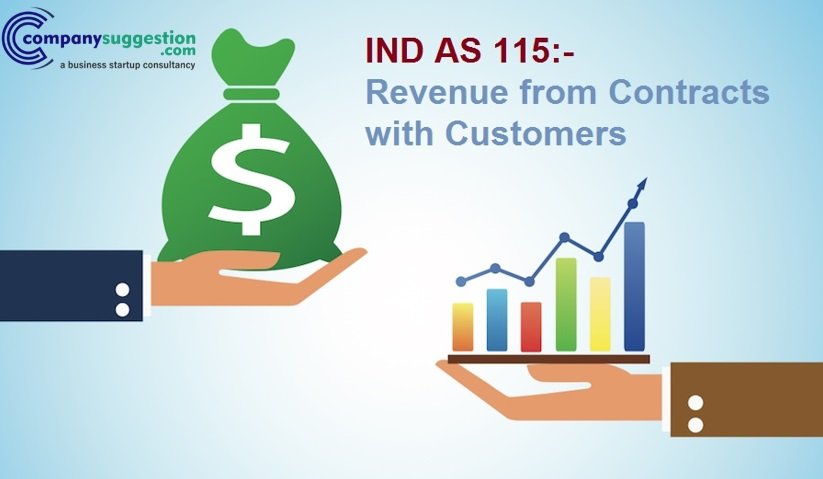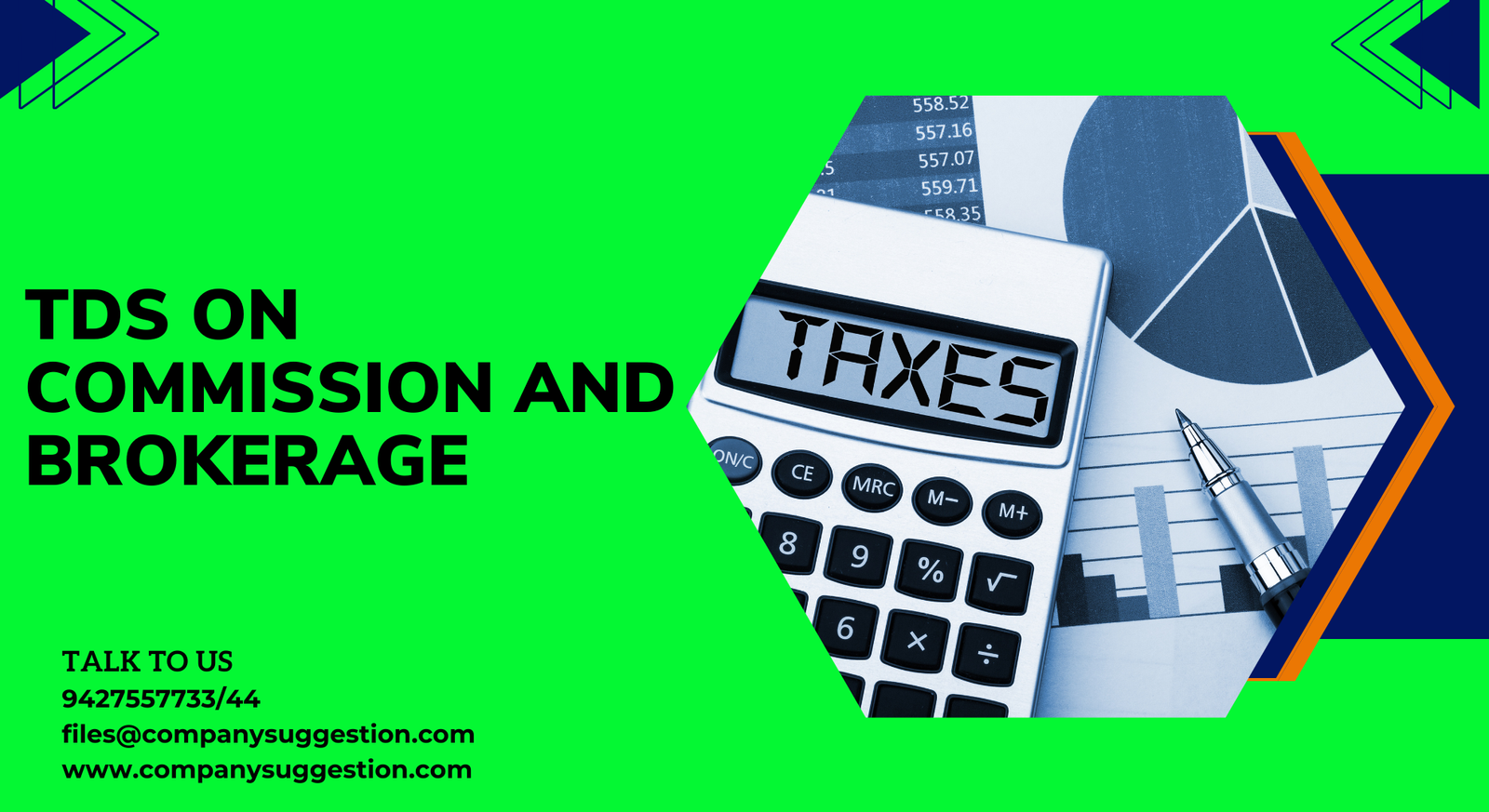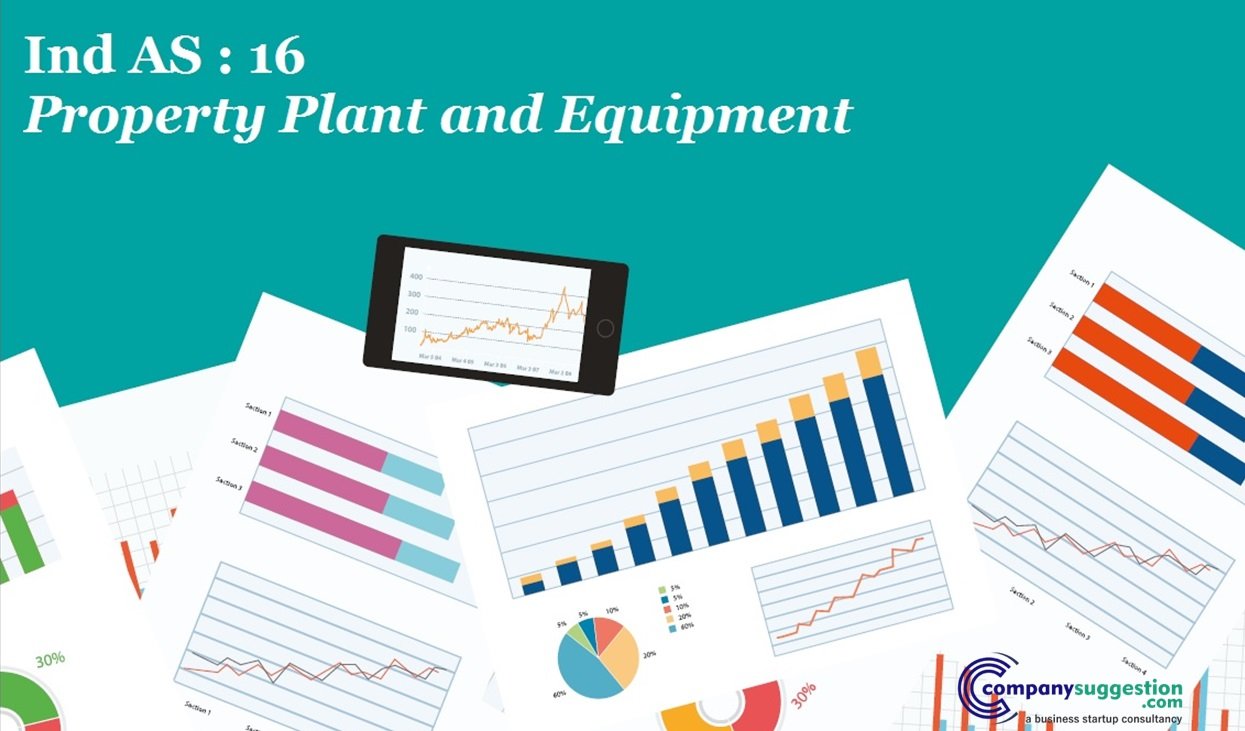IND AS 115 Revenue from Contracts with customers:
Accounting Standard dealt with Revenue Recognition:
- As per Ind AS:
- IND AS 115 Revenue from Contracts with customers.
- As per India GAAP:
- AS 9.
- AS 7.
- Guidance Note for Real estate developer.
- Guidance Note for Mining and Gas Producing Activities
- Guidance for Retail Industry
- Guidance for Software Revenue Recognition.
- As per IFRS:
- IAS 18.
- IAS 11.
- IFRIC 15 Real estate recognition
- IFRIC 13 Customer Loyalty Programme.
- IFRS 15 ( By replacing above 4 standards)
Major Impact of IND AS 115 in following Industry:
- Retail Industry.
- Industry dealt with Long term Contracts for Real Estate / Software / Services etc.
Scope and Exception:
This Ind-AS having general approach to cover all transactions related to revenue contracts with customer for all transaction not specified in other Ind-AS. If specific transaction specified in other Ind-AS then that Specified transaction will be accounted by applying that Specified Ind-AS for eg. Lease Contracts.
- Its cover following in the scope:
- Contracts with customers.
- Sale of some non-financial assets that are not an output of the entity’s ordinary activities (e.g., property, plant and equipment).
2. Its not cover following in the scope:
- Leasing contracts – IND AS 17.
- Insurance contracts – IND AS 104.
- Financial instruments and other contractual rights and obligations – IND AS 109.
- Certain non monetary exchanges.
Collaborative arrangements:
Need to assess if a vendor customer relationship exists. Customer is a party that has contracted with an entity to obtain goods or services that are an output of the entity’s ordinary activities in exchange for consideration.
If receipts from party other than customer, it will be not be treated as revenue from customers as per this Ind AS. Hence assessment of customer is essential while applying this Ind AS.
Revenue Model of Ind AS 115 Revenue from Contracts with Customers:
| Step 1: Identify the contracts with the customer. |
| Step 2: Identify the performance obligations in the contract. |
| Step 3: Determine the transaction price. |
| Step 4: Allocate the transaction price to the performance obligations. |
| Step 5: Recognize revenue when each performance obligation is satisfied |
Step 1: Identify the contracts with the customer:
A contract is defined as an agreement between two or more parties that creates enforceable rights and obligations. Its can be written, oral or implied but must meet specific criteria.
Following Conditions must be satisfied for existence of contract:
- Collection of consideration of probable.
- Rights to goods/services and payment terms can be identified.
- It is approved and the parties are committed to their obligations.
- It has commercial substance.
Criteria will be assessed at the inception of the arrangement and Reassessment only if significant change in facts and circumstances.
If collection of consideration is not probable and valid contract does not exists then revenue cannot be recognized until the point of time uncertainty of collection of consideration is removed.
Combining Contracts:
Multiple contracts with similar characteristics may be combined if the entity reasonably expects the effects on the financial statements would not materially differ. The Combining contract will be accounted as a single contract if following conditions are satisfied:
- Contracts are negotiated as a single commercial package
- Consideration in one contract depends on the other contract
- Goods or services are single performance, determination of whether the seller supply the services or goods in the composite manner in the normal course of business or sell the services individually.
Contract Modifications:
It can be understand by following diagram:

Example of Contract Modification:
Construction company A enters into a contract with a customer to build a road for a contract price of 10,000.
- During the construction of the road, the customer requests that a section of the road be widened to include two additional lanes.
- Company A and the customer agree that the contract price will be increased by 1000.
How does company A account for the modification?
Answer:
- In evaluating how to account for the contract modification, company A first needs to determine whether the modification adds distinct goods or services.
- If the road widening is not distinct from the construction of the road, then it becomes part of single performance obligation that is primarily satisfied at the date of the contract modification, and the measure of progress is updated using cumulative catch up method.
- In this case The effect will be determined retrospectively and adjustment will be done in the revenue on the date of modification of contract.
- If the road widening is distinct from the construction of the road and 1000 reflects its stand alone selling price, construction of additional lanes is accounted for separately from the original contract for construction of the road. This will result in prospective accounting for modification as if it were a separate contract for additional lanes.
- If 200 does not reflect its stand alone selling price, then the agreement to construct additional lanes is combined with the original contract and the unrecognized consideration is allocated to the remaining performance obligation performance obligations. Revenue is recognized when or as the remaining performance obligations are satisfied – i.e. prospectively.
Step 2: Identify performance obligations:
- Performance obligations are identified at contract inception and determined based on:
- Contractual terms.
- Customary business practices.
- Incidental obligations or marketing incentives may be performance obligations for e.g., “free” maintenance provided by automotive manufacturers, loyalty points provided by a hotel.
- Does not include activities to satisfy an obligation (e.g., setup activities, transportation) unless a good or service is transferred.
Two Step model to identify which goods or services are distinct:
Step 1: Focus on whether the good or service is capable of being distinct:
By determining the following –
whether the Customer can benefit from the individual good or service on its own. OR
Customer can use good or service with other readily available resources.
Step 2 : Focus on whether the good or service is distinct in the context of the contract:
The good or service is not highly dependent and interrelated with other promised goods or services in the contract.
Examples:
► Entity enters into a contract to manufacture and install customized equipment and provide maintenance services for a five year period
► Installation services include the integration of multiple pieces of equipment at the customer’s facility in order for the equipment to operate as a single unit.
► Equipment cannot operate without installation.
► Entity sells equipment and installation services together, does not sell installation separately.
► Other vendors can provide the installation services
► The maintenance services are sold separately.
Answer : There would be two performance obligations: (1) the equipment and installation because they are not distinct; (2) maintenance services because they are distinct services in the contract.
Customer Loyalty Programme:
Options to purchase additional goods or services (e.g., incentives, award credits, renewal options) represent separate performance obligations if they provide the customer with a material right. Revenue is recognized when future goods and services are transferred or when the option expires.
For Example :
Product Revenue is Rs. 1 Lakh.
Discount Voucher of Rs.10K for 1 year.
Answer:
There is 2 performance obligation.
Accounting Entries will be passed:
- Bank Dr. 1L
To Revenue 90K
To Liability 10K
When customer is redeem the discount voucher:
2. Liability Dr 10K
To Revenue 10K
If customer is not redeem the discount voucher during the year the at the end of the year other income will be booked:
3. Liability Dr 10K
To Other Income 10K
Note: if the discount voucher given for indefinite period then at the end of every reporting period estimation of liability which will be redeem in the future will be ascertained and the portion of estimated liability which is not redeemable in the future will be revert back to Profit & loss account as other income. Here the reversal of liability which not redeem or redeemable accounted as other income not as revenue from product/service, but no specific guideline given in the AS.
Example : An entity enters into a contract with a customer A to supplies includes a 40% discount voucher on future purchases. Simultaneous seasonal promotion gives all customers a 10% discount, therefore customer A receives an incremental discount of 30% (40% discount in the contract less the 10% discount available to all customers). Entity determines there is an 80% likelihood of redemption and estimates that customers will purchase (on average) INR 100 of additional goods.
Answer : Entity estimates the standalone selling price of voucher as follows:
Average purchases x incremental discount x likelihood
100 x (40% – 10%) x 80% = Rs. 24.
Principal versus agent considerations:
Indicators that an entity is an agent include:
- Entity is not the primary obligor.
- Entity does not have inventory risk.
- Entity does not have latitude in establishing prices.
- Entity’s consideration is in the form of a commission.
- Entity is not exposed to credit risk.
On the basis of indicators determining whether an entity acts as a principal or an agent in a specific arrangement. The amount of revenue recognized as gross if agent conditions not satisfied and principal condition fulfilled. The amount of revenue recognized as net basis i.e. commission will be recognized if agent conditions are satisfied and principal conditions not fulfilled.
Step 3: Determine the transaction price:
Transaction price is defined as the amount of consideration to which an entity expects to be entitled in exchange for transferring promised goods or services to a customer.
Transaction price reflects the effects of the following:
► Variable consideration (including application of the constraint)
► Significant financing component
► Consideration paid to a customer
► Non cash consideration.
There is two approach for determination of transaction price:
- Expected value: Sum of the probability weighted amounts in a range of possible outcomes.
- Most likely amount: The single most likely amount of possible outcomes.
Rights of return:
Rights of return is a variable consideration. Revenue recognition is limited to amounts for which it is “probable” a significant reversal will not occur i.e. it is probable the goods will not be returned.
For Example:
A sells 1,000 products to Distributor for INR 50 each. Distributor has the right to return the products for a full refund for any reason within 180 days of purchase. The cost of each product is INR 10. A estimates, based on the expected value method, that 6% of sales of the products will be returned and it is highly probable that returns will not be higher than 6%.
Answer:
Following entries will be passed:
On the date of Sales:
1. Debtors A/c Dr. 50000
To Revenue 47000
To Refund Liability 3000
2. Return Assets Dr 600
To Cost of Goods Sold 600
On the Date of Return of Goods:
1. Inventory A/c Dr. 600
To Return Assets 600
Significant financing component:
In the case of significant financing component included in the transaction price, then this component will be accounted over the period of the contract as interest income.
Example:
Normal Credit Period is 30 Days
Price of One Product is 100 Rs.
Credit Period to the customer is 2 Years
Price charges from the customer is 110.
Then revenue will be accounted as 100 Rs and Interest Income will be accounted of Rs. 10 over the period of credit i.e. 2 Years.
Advance payment:
An entity enters into a contract with a customer to sell an asset. For Example :
Control of the asset will transfer to the customer at the end of 2 years (i.e. the performance obligation will be satisfied at a point in time).
The contract includes two alternative payment options:
- Payment of INR 5,000 in two years when the customer obtains control of the asset; or
2. Payment of INR 4,000 when the contract is signed.
The entity’s incremental borrowing rate is 6%.
Answer: In case the customers opt to pay advance payment upon signing, it seems that the contract contains a significant financing component because, The difference between the amount of consideration under the two options is significant (5,000 minus 4,000 i.e. 1,000). The expected length of time between payment of advance and transfer of goods is significant (2 years). The interest rate implicit in the payment options (11.8%) is significantly higher than the entity’s incremental borrowing rate (6%). Significant financing component will be accounted over the period of the contract as interest income.
Non-cash consideration:
► When an entity expects to receive non-cash consideration, such consideration is measured at the fair value of the amounts received or promised and is included in the transaction price.
► If the fair value cannot be reliably estimated, non-cash consideration is to be measured indirectly by reference to the stand alone selling price of the goods or services transferred to the customer.
Consideration payable to a customer:
If consideration payable to the customer is distinct from the service and goods supplied to the customer and the amount of consideration payable to the customer is fair valued then the amount of consideration will be charged as cost in the income statement and revenue will be booked at full amount of transaction. Otherwise if above conditions not satisfied then this will be deduct from the revenue.
Non refundable upfront fees:
Non-refundable upfront fees will be allocate over the period of performance obligation satisfied by the seller. In the Telecom industry non-refundable activation fees will be allocate over the period of service provided by the company to the customer. Hence in this case Company will be determined the expected life of service will be served by the company on the basis of past experience and market condition. After calculating the expected life known as Chen Period of the company, on the fulfillment of performance obligation the activation fees will be allocate over the chen period.
Mere receipt of the non refundable fees, seller cannot be recognized as revenue until the performance obligation satisfied for which the non refundable fees is received from the customer.
Step 4: Allocate the transaction price:
Allocation of the transaction price will be on the each performance obligation. For determination of stand alone price, observable price will be calculate. If observable price not available then estimated price will be calculate by Adjusted market assessment approach and Expected cost plus margin approach and residual approach.
If variable consideration relates specifically to the one performance obligation then this consideration will be allocate to that performance obligation.
Allocation of a discount:
► An entity is required to allocate a discount entirely to one or more (but not all) performance obligations if all of the following criteria are met:
► The entity regularly sells each distinct good or service (or each bundle of goods or services) in the contract on a standalone basis.
► The entity also regularly sells on a standalone basis a bundle (or bundles) of some of those distinct goods or services at a discount.
► If the discount (when comparing standalone sales of a bundle to standalone sales of the distinct goods or services) is substantially the same as the discount in the contract and provides evidence that the entire discount belongs to one (or some) distinct performance obligations.
Step 5: Recognize revenue as performance obligations are satisfied:
Revenue is recognized when entity satisfies a performance obligation by transferring a promised good or service to a customer. A good or service is considered to be transferred when the customer obtains control. Performance obligations are either satisfied over time or at a point in time.
Control of goods and services is transferred over time if one of the following three criteria is met:
- The entity creates or enhances an asset that the customer controls as it is created or enhanced.
- The entity’s performance does not create an asset with alternative use, and the entity has a right to payment for performance completed to date.
- The customer is receiving and consuming the benefits of the entity’s performance as the entity performs.
If none of the criteria are met, control transfers at a point in time.
Warranties:
- If customer have an option to purchase warranty separately then warranties will be account for as a separate performance obligation.
- If warranty provide a significant service in addition to assurance then warranties will be account for as a separate performance obligation.
- If above conditions not fulfilled then warranties account as a cost on accrual basis as an when cost incurred.
Examples:
Entity sells 100 ultra life batteries for INR 20 each and provides the customer with a five year guarantee that the batteries will withstand the elements and continue to perform to specifications. The entity, which normally provides a one year guarantee to customer purchasing ultralife batteries, determines that years two through five represent a separate performance obligation. The entity determines that INR 1,700 of the INR 2,000 transaction price should be allocated to the batteries and INR 300 to the service warranty. The entity’s normal one year warranty cost is INR 1 per battery
Answer:
If the customer purchase the warranty of Two to Five Year separately, it’s a separate performance obligation due to separate service warranty will be given to the customer. One year warranty not selling separately and it’s a assurance obligation hence it will be accounted on accrual basis on the expenses incurred by the company.
Upon delivery of the batteries, the entity records the following entry:
- On the sales of product:
Dr. Cash/Receivables 2,000
Cr. Revenue 1,700
Cr. Contract liability (service warranty) 300
2. As and when incurred the warranty expenses:
Dr. Warranty expense 100
Cr. Accrued warranty costs (assurance warranty) 100
► The contract liability is recognized as revenue over the service warranty period (years two through five). The costs of providing the service warranty are recognized as incurred.
► The assurance warranty obligation is relieved as defective units are replaced/repaired during the initial year of the warranty.
► Upon expiration of the assurance warranty period, any remaining assurance warranty obligation is reversed.
Incremental costs:
Incremental Cost of obtaining the contract will be capitalized in the balance sheet and will be amortized over the period of contract.
Sales based royalties:
One time fees of software of intellectual property will be allocate on the basis of Right to access and right to use as per the terms of contract. royalty will be allocate over the period of contract as and when entity is eligible to get the royalty income.
► Right to access the intellectual property (IP) means the customer is only right to access the end of the product, the customer cannot change the product as per the requirement of customer and cannot designed as per the conditions of customer. In the case of Right to access the intellectual property, revenue will be accounted on the over period of the contract.
► In the case of right to use, the software company sell the license to the customer and the customer will be implemented the software as at customer own requirement and conditions like oracle and SAP. In this case the software revenue will be accounted on day one at point of sale.
Disclosures:
For help financial statement users understand the nature, amount, timing and uncertainty of revenue and cash flows arising from contracts with customers.
Entity must present qualitative and quantitative information about:
► Contracts with customers.
► Significant judgments and changes in judgments made when applying the guidance to those contracts.
► Assets recognized from costs to obtain or fulfill a contract.













